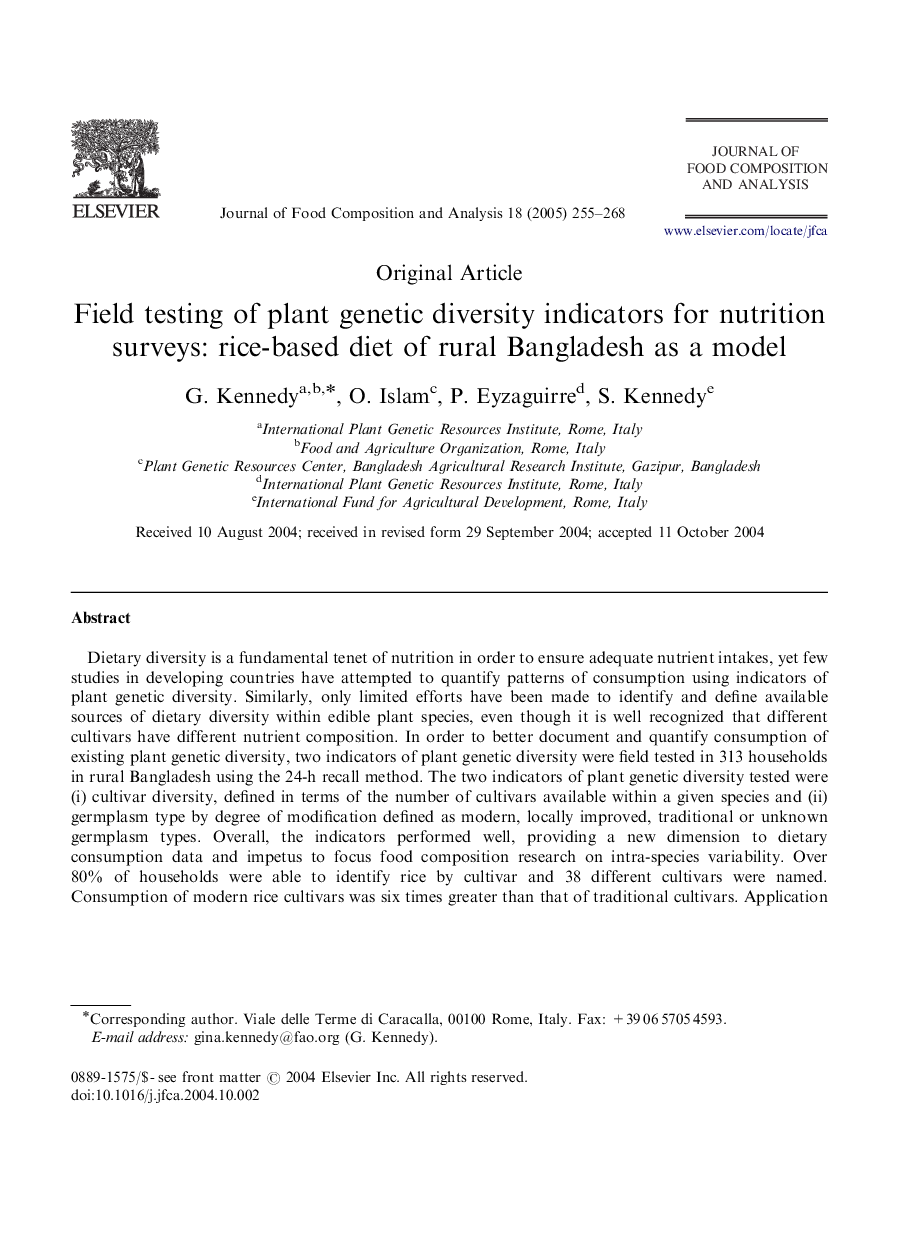| Article ID | Journal | Published Year | Pages | File Type |
|---|---|---|---|---|
| 10553025 | Journal of Food Composition and Analysis | 2005 | 14 Pages |
Abstract
Dietary diversity is a fundamental tenet of nutrition in order to ensure adequate nutrient intakes, yet few studies in developing countries have attempted to quantify patterns of consumption using indicators of plant genetic diversity. Similarly, only limited efforts have been made to identify and define available sources of dietary diversity within edible plant species, even though it is well recognized that different cultivars have different nutrient composition. In order to better document and quantify consumption of existing plant genetic diversity, two indicators of plant genetic diversity were field tested in 313 households in rural Bangladesh using the 24-h recall method. The two indicators of plant genetic diversity tested were (i) cultivar diversity, defined in terms of the number of cultivars available within a given species and (ii) germplasm type by degree of modification defined as modern, locally improved, traditional or unknown germplasm types. Overall, the indicators performed well, providing a new dimension to dietary consumption data and impetus to focus food composition research on intra-species variability. Over 80% of households were able to identify rice by cultivar and 38 different cultivars were named. Consumption of modern rice cultivars was six times greater than that of traditional cultivars. Application of these indicators in future studies has potential utility within the fields of agro-biodiversity conservation and nutrition.
Keywords
Related Topics
Physical Sciences and Engineering
Chemistry
Analytical Chemistry
Authors
G. Kennedy, O. Islam, P. Eyzaguirre, S. Kennedy,
